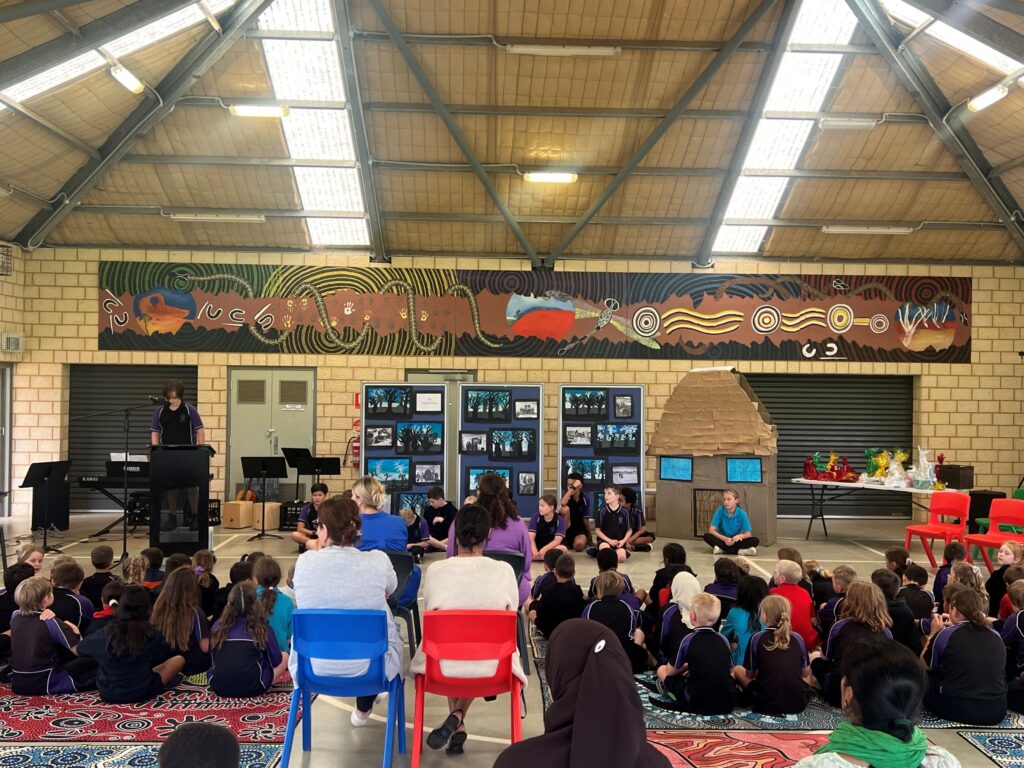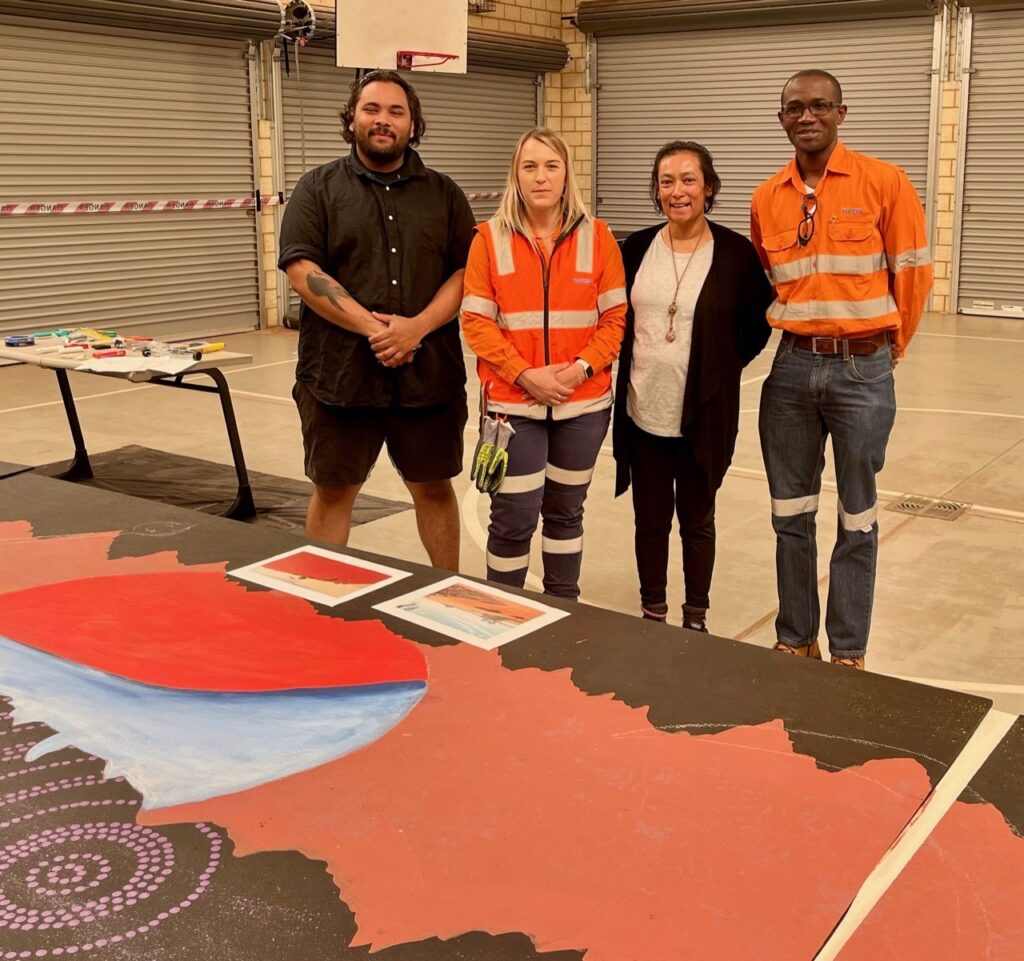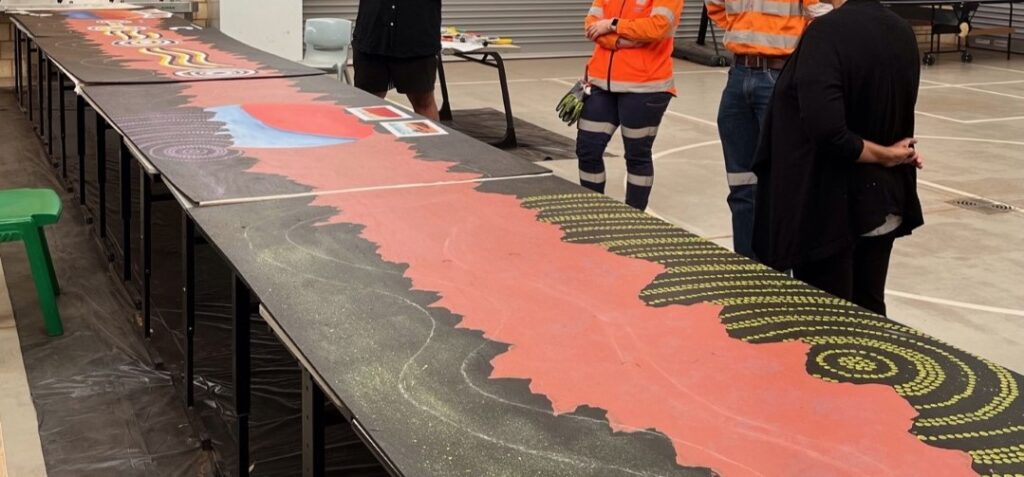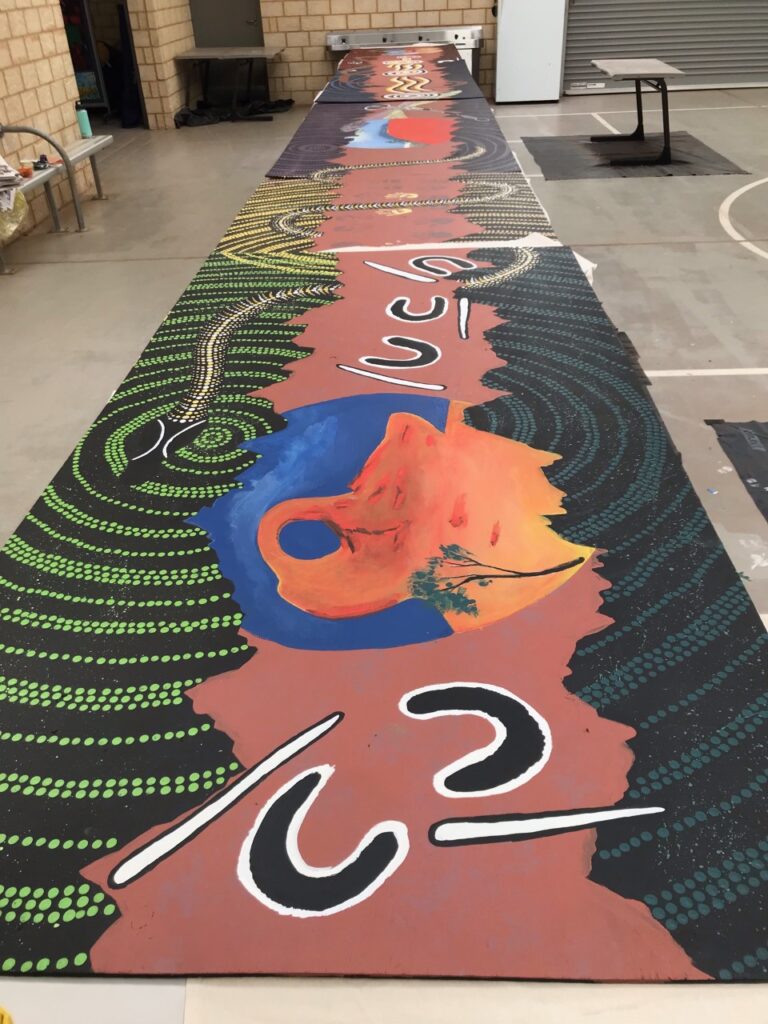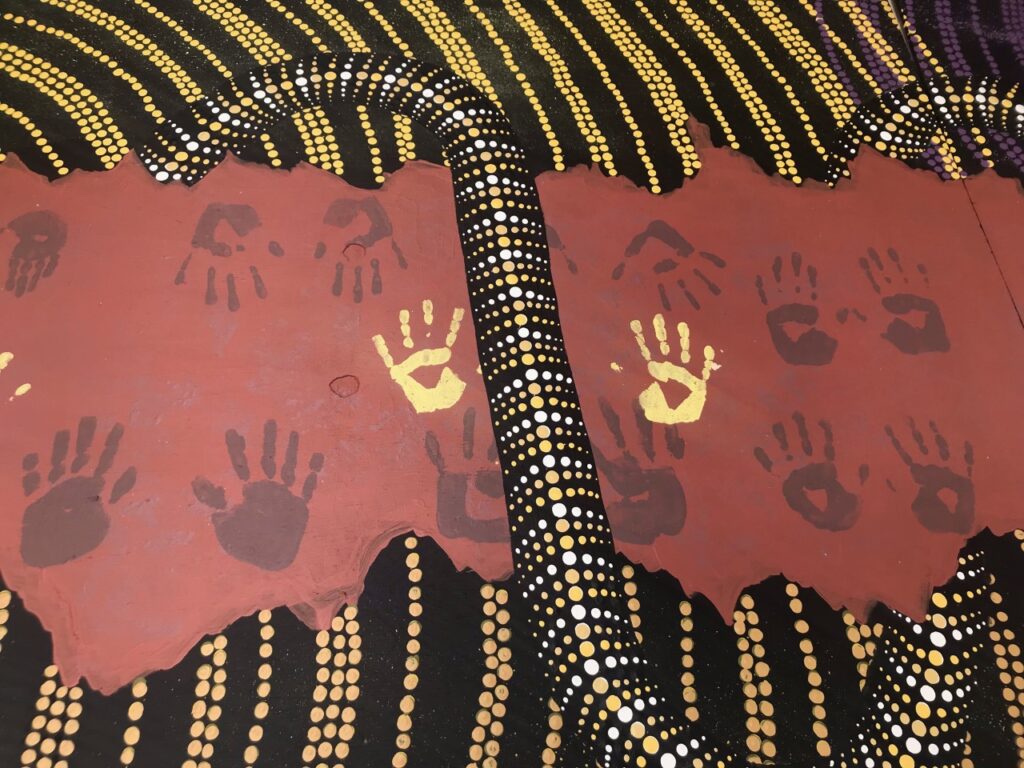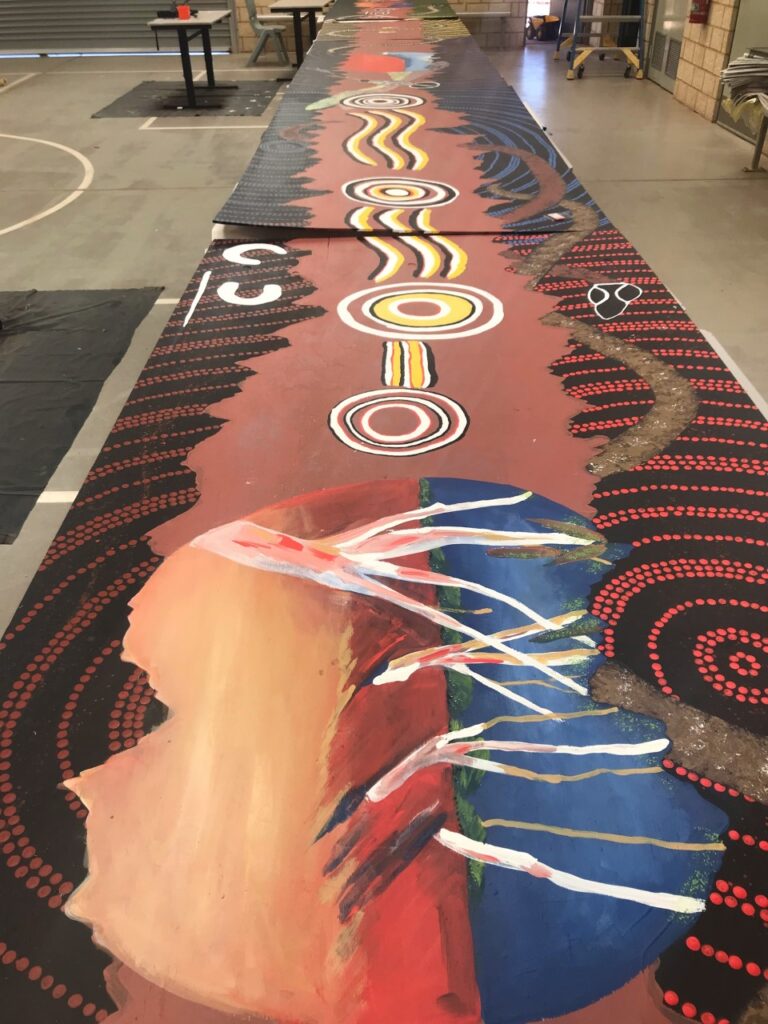With thanks to Thiess who has sponsored this initiative, the mural for the undercover area was completed in 2021 by Deeva, Kado and Karthie Muir – representatives of the Tjiwarl native title owners.
This Mural tells a story of the cultural and spiritual significance of land from Leinster via Lake Miranda to Yakabindie and Jones Creek. These stories come from Tjukurrpa or Dreaming and explains the origins of significant sites and places in the landscape. Sharing these stories helps create an understanding of the strong cultural and spiritual connection Tjiwarl traditional owners have with the land. It also helps those visiting or living in Tjiwarl country to better understand the significance of the lands on which you live or visit.
The Mural Story: Tjiwarl Ngurrara (homeland)
This mural is a painting of key Dreaming stories associated with Tjiwarl country. Leinster is located on the south east corner of Tjiwarl country, the most prominent feature near Leinster is the hole in the rock the name for this rock is Kataka. In the Tjukurrpa, Dreaming, a female carpet snake (Kunia) left her friends at Lake Miranda and travelled south toward Lawler’s (panel two). On her way south she passed a group of women sitting at Wakara soak and children playing at Manatjarra near where Leinster is. Panel one shows the women and children of Leinster near Kataka rock. We include the Leinster student handprints to connect the children living in Leinster today with this story of ancestral Dreaming or Tjukurrpa, Mitilpati kids.
Panel three depicts Lake Miranda, known as Pingkalingkali. At Lake Miranda a male Kunia (Carpet Snake) had food poisoning and was sick, during his illness he rolled in agony on the ground creating the Lake. At one point he vomited and created the red sand dune on Long Island at Lake Miranda. This sand dune is known as Yulkapa. The Dragonfly shown in panel three represents a hunter known as Tjiinkuna (Dragonfly), he is hunting these Kunia (Carpet Snakes) at Lake Miranda.
In the distance to the east of Lake Miranda is a small but prominent hill known in English as McDonough Lookout, but in local Aboriginal language it has always been known as Pukuti. This is where Tjiinkuna, dragonfly man sat down to watch the kunia carpet snakes. The hill represents tjiinkuna’s hair tied in a knot.
At Lake Miranda the Kunia, carpet snakes separated. One female went south (panel two) and the husband and wife Kunia – carpet snakes. Marnti (male/husband) and Yaku (female/wife) travelled north (panel five) to make a camp at Yakumarnti Claypan, near Yakabindie station. Tjiinkuna started to sneak up on the Yaku and Marnti Kunia carpet snakes.
The circles and lines on panel four represent the pathway Tjiinkuna took as he started to sneak up on the Yaku/Marnti Kunia. This pathway is known as Nantanantakukararra, which includes parts of the Violet Range and Meredith well area. The first circle is Pukuti, with the Tjiinkuna (Dragonfly) next to it. The second circle is a place known as Tangkara, the third circle is known as Nalpi and finally the last small circle is a place known as Tjamana. It is at Tjamana that the Yaku/Marnti became aware that Tjiinkuna was hunting them. Tjamana is a rocky feature near Mt Mann.
The two Kunia (carpet snakes) camping at Yakumarnti Claypan realised a man was hunting them and so they jumped and rushed away in panic and fear. As the Kunia fled, they went through the middle of a group of naluti (sticknest rat) women who leaped up in fright as two snakes slithered between them. The women are represented by the “U” shapes at the bottom of panel five. The landscape Image on panel five represents Jones Creek, known as Ngurluwuriwuri. Jones Creek, Ngurluwuriwuri is the pathway left behind by the two Kunia as the panicked and fled away from the hunter.
This Mural tells a story of the cultural and spiritual significance of land from Leinster via Lake Miranda to Yakabindie and Jones Creek. These stories come from Tjukurrpa or Dreaming and explains the origins of significant sites and places in the landscape. Sharing these stories helps create an understanding of the strong cultural and spiritual connection Tjiwarl traditional owners have with the land. It also helps those visiting or living in Tjiwarl country to better understand the significance of the lands on which you live or visit.
Written by Kado Muir, Ngalia Cultural Mentor Tjiwarl Native Title Holder.
Image Gallery
